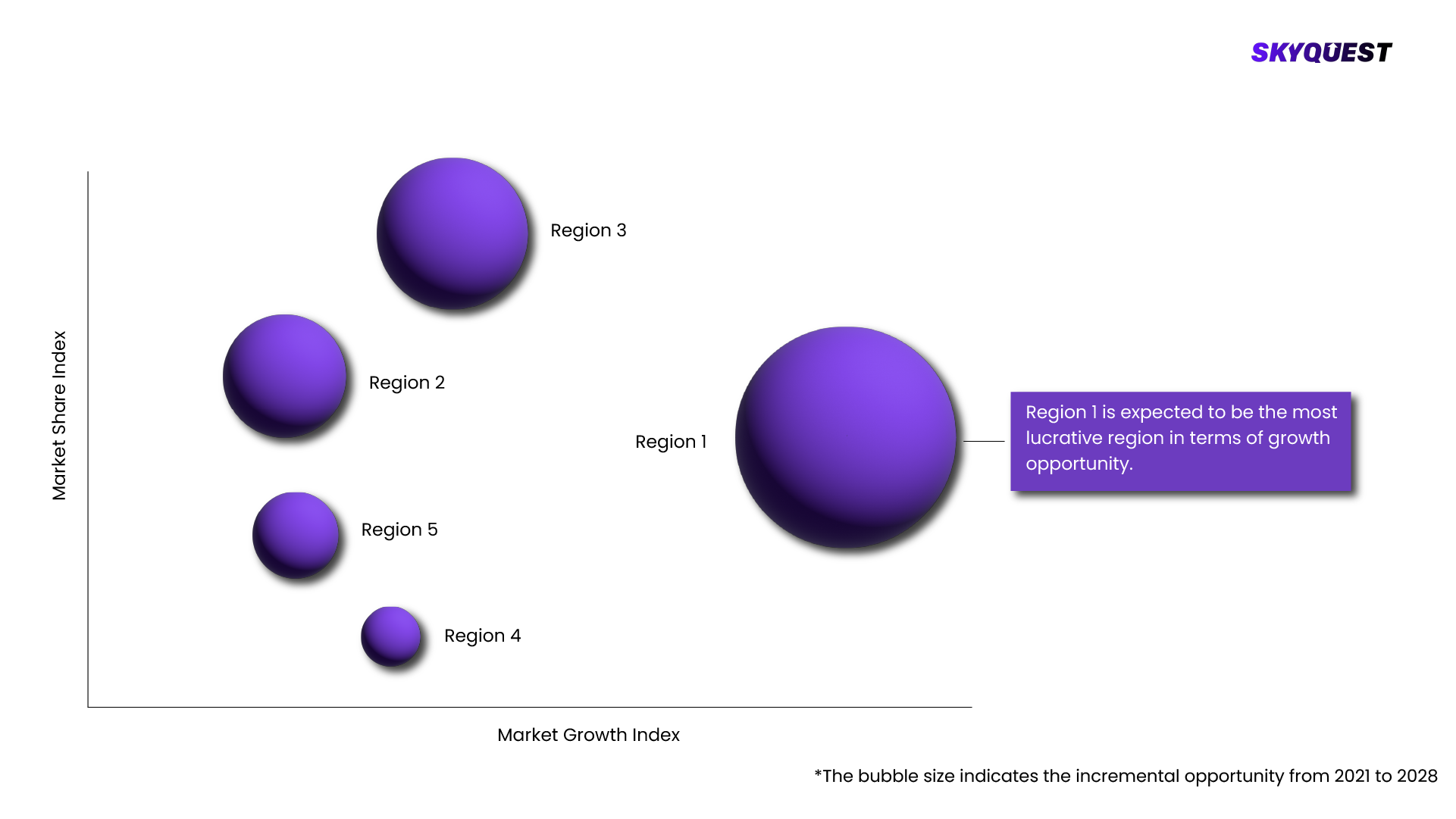
Report ID: UCMIG35I2240

Report ID:
UCMIG35I2240 |
Region:
Global |
Published Date: Upcoming |
Pages:
165
| Tables: 55 | Figures: 60
Antisense & RNAi Therapeutics Market is being analyzed by North America, Europe, Asia-Pacific (APAC), Latin America (LATAM), Middle East & Africa (MEA) regions. Key countries including the U.S., Canada, Germany, France, UK, Italy, Spain, China, India, Japan, Brazil, GCC Countries, and South Africa among others were analyzed considering various micro and macro trends.

Our industry expert will work with you to provide you with customized data in a short amount of time.
REQUEST FREE CUSTOMIZATIONThe market for Antisense & RNAi Therapeutics was estimated to be valued at US$ XX Mn in 2021.
The Antisense & RNAi Therapeutics Market is estimated to grow at a CAGR of XX% by 2028.
The Antisense & RNAi Therapeutics Market is segmented on the basis of Technology, Application, Route of Administration, Regional.
Based on region, the Antisense & RNAi Therapeutics Market is segmented into North America, Europe, Asia Pacific, Middle East & Africa and Latin America.
The key players operating in the Antisense & RNAi Therapeutics Market are nsights , The antisense & RNAi therapeutics market size was estimated at USD 1.09 billion in 2018 and is expected to witness a CAGR of 7.5% during the forecast period. Antisense technology provides the opportunity to manipulate the gene expression and this is being considered as an effective treatment for various diseases. This opportunity is being cashed on by the companies and investing in R&D in this sector. , The possibility of studying gene function for disease management by regulating the gene expression by the malfunctioning gene, R&D carried out with respect to the treatment of uncommon neurodegenerative diseases, such as hereditary ATTR amyloidosis, are some of the other factors anticipated to drive the market. , Antisense and RNAi therapeutics enable specific and highly effective gene silencing, based on this factor, a fair number of gene silencing drugs are in the late-stage of development. The market is expected to grow in the forecast period owing to a number of companies that are into the development of molecules based on antisense technology. , Collaboration activities between the pharmaceutical companies and Contract Research Organizations (CROs) working on drug delivery are expected to have a positive impact on the antisense & RNAi therapeutics market growth. However, overcoming the challenges like unpredictable activity from the molecules and other delivery-related complications would prove to be the market changing development of antisense therapeutics. , In January 2016, Ionis Pharmaceuticals (previously Isis Pharmaceuticals) initiated a Phase-I study of ISIS-HBV-L Rx in collaboration with GSK Pharmaceuticals for the treatment of Hepatitis’s B viral infection. Another collaboration by Ionis pharmaceuticals with Akcea Therapeutics has led to the approval of the world’s first antisense-based molecule “Tegsdi” by the FDA and the European Commission in 2018. , However, there are many challenges associated with emerging antisense technology (and RNAi). One of the prominent bottlenecks is the drug delivery to the intended site. Drug delivery to the nervous tissues is one of the problems as the drug has to pass the blood-brain barrier. Companies are coming up with solutions to overcome these challenges. , The toxic effects caused is another challenge for the use of this technology. Determining the right dosage and vector for drug delivery of an antisense molecule is one of the most important steps to ensure safe administration. Companies have also faced rejections from the regulatory bodies. For instance, Akcea’s Waylivra, an antisense molecule to treat familial chylomicronemia syndrome was rejected by the FDA. These factors would push companies to develop better vectors, delivery solutions, and compositions. , Technology Insights , Antisense RNA has led the market in terms of revenue generation. These molecules are being tested to prevent disease onset and to halt the disease progression. Recent studies have shown that molecules with the use of antisense technology being trailed for spinal muscular atrophy and amyotrophic lateral sclerosis have shown promising results. Additionally, many other antisense technologies and oligonucleotide molecules are being tested for the treatment of non-neurodegenerative disorders. For instance, antisense-mediated exon skipping for Duchenne muscular dystrophy. , Application Insights , The rising need for the cure and prevention of diseases like cancer, HIV, and other diseases caused by mutating viruses is anticipated to influence the usage rate of oligonucleotide products. An increasing number of clinical trials for the oligonucleotide drugs exhibit that the field is rapidly expanding. For instance, Ionis Pharmaceuticals alone has 4 molecules in pipeline and 2 approved molecules in the European Union and 1 in the U.S. , Substantial pipeline for cancer therapies by companies and institutes such as Enzon Pharmaceuticals (Santaris Pharma), University of Texas, OncoGenex, Isarna Therapeutics, Astrazeneca (Ionis Pharmaceuticals), and INSYS Therapeutics, Inc. are expected to drive the market. In addition, many companies have invested in R&D for nanocarriers to deliver oligonucleotides for cancer treatment, which is expected to contribute to cancer management. , Nanocarriers can minimize the toxicity of these oligonucleotides. However, considerable bottlenecks of these nanoparticle systems are that they are influenced by inter and intra-tumor heterogeneity. This in turn has increased the need for efficient tumor targeting vectorization systems and multiple genes targeting oligonucleotide drugs. This need for newer and safer delivery systems for cancer and other viral disease management is expected to propel the market growth. , Route of Administration Insights , Route of administration is one of the most important aspects of any genetically modified molecule. The efficacy of these molecules varies based on the method of administration, the vector used for the genetically modified molecule, type of molecule for injection. Most of the studies that in progress use largely employ attenuated viral particles or bacterial cells and are injected intravenously for the treatment. , Scientists are developing novel delivery systems like nanocarriers, to promote the in-vivo delivery of the oligonucleotides. Nanocarriers are known to enhance the bioavailability, carrying capacity of siRNA payload and they provide high interaction with the target cells. Another advantage of nanoparticles as carriers is that according to their charge they can interact with blood proteins to incite toxicity or even affect biodistribution. , Regional Insights , The U.S. has a number of RNAi therapeutics that are in developmental pipelines. A number of biotechnology companies have made considerably high investments for RNAi therapeutic development. Big pharmaceutical developers have entered into collaboration agreements or licensing deals with a number of smaller firms in an attempt to capitalize on the expected growth in revenue that this market can have over the forecast period. For instance, AstraZeneca’s agreement with Ionis pharmaceuticals is one of the big deals that are investing heavily in antisense technology , Since the discovery of RNAi in, there have been numerous avenues of treatment development using RNAi, however, the market has picked up very little over the past decade due to the complexities in delivery methodologies related to RNAi. The development of newer nanotechnology-oriented methods has re-infused the market with a high potential to grow over the forecast period. , A number of drug candidates under clinical trials have shown favorable results and are progressing through the development phases. Assuming that such trials continue to show positive results, it can be expected that the North American market will witness considerable growth in demand over the forecast period. , Antisense & RNAi Therapeutics Market Share Insights , These companies are involved in the development of RNAi therapies and platforms that offer medicines, diagnostics, and personalized treatment options for key diseases. Alnylam Pharmaceuticals, Ionis Pharmaceuticals, Akcea Therapeutics, Quark Pharmaceuticals, and Gene Signal are several other companies with stronger pipeline portfolio. , KEY MARKET SEGMENTS, By Technology, RNA Interference , siRNA , miRNA , Antisense RNA , By Application, Oncology , Cardiovascular Diseases (CVDs) , Respiratory Disorders , Renal Diseases , Neurodegenerative Disorders , Genetic Disorders , Infectious Diseases , Other , By Route of Administration, Pulmonary Delivery , Intravenous Injections , Intra-dermal Injections , Intraperitoneal Injections , Topical Delivery , Other Delivery Methods , By Regional, North America , The U.S. , Canada , Europe , Germany , U.K. , Asia Pacific , Japan , China , Latin America , Brazil , Middle East & Africa , South Africa , KEY MARKET PLAYERS, GSK , Sanofi-Genzyme , Alnylam Pharmaceuticals , Marina Biosciences , Benitec Biopharma".
Want to customize this report? This report can be personalized according to your needs. Our analysts and industry experts will work directly with you to understand your requirements and provide you with customized data in a short amount of time. We offer $1000 worth of FREE customization at the time of purchase.

Report ID: UCMIG35I2240